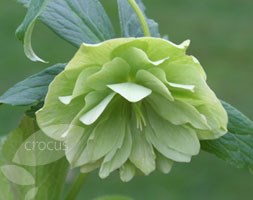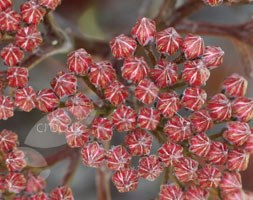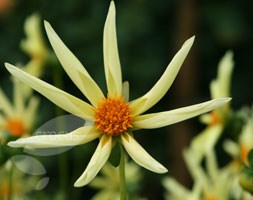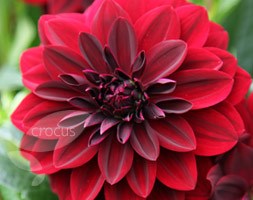New products at Crocus
by Sarah - May 11th, 2013.Filed under: Crocus, New Products.
New products today at Crocus
Helleborus x hybridus ‘Harvington Double Lime’ (lenten rose) £9.99
Position: partial shade Soil: heavy, neutral to alkaline soil Rate of growth: average Flowering period: February to April Flower colour: lime green Other features: all parts of the plant cause severe discomfort if ingested; the sap may cause skin irritation Hardiness: fully hardy A gorgeous, new variety with pendent or outward-facing, saucer-shaped flowers that have lime green-coloured petals. These apear from February to April above the leathery, deep green leaves. This lenten rose creates a stunning ground cover for areas of dappled shade under deciduous trees and shrubs. Like all hellebores, they prefer a heavy, neutral to alkaline soil. Garden care: Add lots of well-rotted leaf mould or organic matter to the planting hole. Cut the old leaves back down to the ground in January or February as this will show off the new emerging flowers to best effect. It will also help to get rid of foliar diseases such as Hellebore leaf spot. Apply a generous 5-7cm (2-3in) mulch of well-rotted organic matter around the base of the plant in autumn and provide a top-dressing of general fertiliser each spring.
Sedum ‘Jose Aubergine’ (orpine) £8.99
Position: full sun Soil: moderately fertile, well-drained, neutral to slightly alkaline soil Rate of growth: average to fast-growing Flowering period: August to October Flower colour: pink Other features: attractive to butterflies and bees Hardiness: fully hardy Strong growth produces a clump of fleshy, deep purple foliage, which from late summer is crowned with clusters of dusky pink flowers. The upright habit is quite sturdy, so it rarely becomes floppy or needs support as the plant matures. Thriving in sunny, well-drained conditions, it makes a fine addition to the gravel or seaside garden, and will be very comfortable in a pot. Garden care: The flowerheads look great left during the winter to add shape and texture to your border. In February and March cut back the old flowerheads and apply a generous 5-7cm (2-3in) mulch of well-rotted garden compost or manure around the base of the plant. Once established, sedums can have a tendency to flop leaving an open and unsightly centre, especially in fertile soil. One technique to help prevent this is the ‘Chelsea chop’. During the last week of May (Chelsea Flower Show week), cut one in every three stems back to the ground. This will produce plants that are less lush and flower slightly later.
Dahlia ‘Honka’ (dahlia) £7.99
Position: full sun Soil: fertile, humus-rich soil Rate of growth: average Flowering period: July to September Flower colour: yellow Other features: excellent cut-flowers Hardiness: half hardy Simple, star-like, yellow flowers with a light fragrance, top sturdy stems from midsummer. Each flower is made up of eight petals, which curl inwards towards their tip, around a bright orange center. Perfect for planting in pots on the patio as the tubers must be lifted and over-wintered in a frost-free place in all but the warmest areas. Garden care: Provide a high-nitrogen liquid feed each week in June, then a high-potash fertiliser each week from July to September. Once the first frosts have blackened the foliage carefully lift and clean the tubers and allow them to dry naturally indoors. Place the dry tubers in a shallow tray, just covered with slightly moist potting compost, sand or vermiculite. Store in a frost-free place, checking frequently over the winter months.
Dahlia ‘Arabian Night’ (dahlia) £6.99
Position: full sun Soil: fertile, humus-rich soil Rate of growth: average Flowering period: June to September Hardiness: half hardy Showy, flamboyant and available in a range of brilliant colours and strong shapes, dahlias are becoming popular again, as a way of adding bold splashes of colour to the garden in summer. ‘Arabian Night’ has masses of fully double, dark wine-red flowers with slightly incurved petals from June until the first frosts. Under certain light the petals of this small dahlia appear almost black. An ideal companion for plum-coloured flowers and foliage plants, it needs a sheltered, sunny site with fertile, humus-rich soil. Garden care: Stake with canes or brushwood as it becomes necessary. Deadhead and feed regularly to prolong flowering. Provide a high-nitrogen liquid feed each week in June, then a high-potash fertiliser each week from July to September. Once the first frosts have blackened the foliage, carefully lift and clean the tubers and allow them to dry naturally indoors. Place the dry tubers in a shallow tray, just covered with slightly moist potting compost, sand or vermiculite. Store in a frost-free place, checking frequently over the winter months. In warmer areas, tubers may be left to overwinter in the ground, although they may suffer from slug damage, particularly in heavy clay soils.










